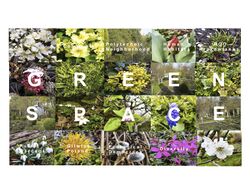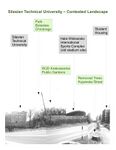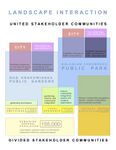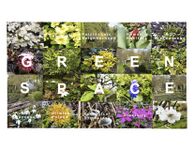LED 2016 Group H Landscape Democracy Challenge 2: Difference between revisions
No edit summary |
|||
| (2 intermediate revisions by the same user not shown) | |||
| Line 7: | Line 7: | ||
{| align="right" width="250pt" style="background:Gainsboro; color:black" | {| align="right" width="250pt" style="background:Gainsboro; color:black" | ||
|- | |- | ||
| '''Place name''' ||style="background:Lavender"| '' | | '''Place name''' ||style="background:Lavender"| ''Polytechnic Neighborhood'' | ||
|- | |- | ||
| '''Location''' || style="background:Lavender"|'' | | '''Location''' || style="background:Lavender"|''Gliwice'' | ||
|- | |- | ||
| '''Country''' || style="background:Lavender"|'' | | '''Country''' || style="background:Lavender"|''Poland'' | ||
|- | |- | ||
| '''Author(s)''' || style="background:Lavender"|'' | | '''Author(s)''' || style="background:Lavender"|''Nicolas Reibel'' | ||
|- | |- | ||
| colspan="3" align="center" style="background:silver"| [[File: | | colspan="3" align="center" style="background:silver"| [[File:Nick.Diversity.jpg|250px]] | ||
|- | |- | ||
| ||style="background:Lavender"| | | ||style="background:Lavender"| | ||
| Line 23: | Line 23: | ||
== Rationale: Why have you chosen this case for the landscape and democracy seminar? == | == Rationale: Why have you chosen this case for the landscape and democracy seminar? == | ||
There is a distinct landscape conflict taking place in the Polytechnic Neighborhood of Gliwice. The focal point is the area of Park Bolesław Chrobrego and the garden allotments ROD Krakowianka. Situated next to each other, they make up the largest combined green space in the urban center. However, they affect the development of the new international sports complex, Hala Sportowa, to the Northeast and the Polytechnic University to the West. The 2002 rezoning of the ROD Krakowianka gardens, a public good created during communism, has forged the path for the Polytechnic to place new administrative buildings there, while allowing the city to use the rest of the space as a commercial zone buffering the area around the Hala Sportowa. Additionally, two new roads have been proposed to run through Park Bolesław Chrobrego, one unifying two wings of the Polytechnic campus and the other increasing access to the Hala Sportowa. The two green spaces that exist today fulfill Hester's ideals for attaining ecological democracy - a resilient, enabling and impelling space in the city center, accessible to a diverse population of students, elderly and the general public. However, past actions – closing 2 of 3 area kindergartens, increasing road traffic, and rezoning and building over accessible green spaces – coupled with the plans mentioned above, lead to the conclusion that the habitat of citizens in this neighborhood is being removed to discourage residence in the area. Communication between the municipality and the citizenry has been documented to be confrontational and incite hearsay and rumors. Citizen participation in the formulation of the city plan has been limited to petitions and brief formal meeting between elected neighborhood and city officials, after the planning process has nearly been completed. | There is a distinct landscape conflict taking place in the Polytechnic Neighborhood of Gliwice. The focal point is the area of Park Bolesław Chrobrego and the garden allotments ROD Krakowianka. Situated next to each other, they make up the largest combined green space in the urban center. However, they affect the development of the new international sports complex, Hala Sportowa, to the Northeast and the Polytechnic University to the West. The 2002 rezoning of the ROD Krakowianka gardens, a public good created during communism, has forged the path for the Polytechnic to place new administrative buildings there, while allowing the city to use the rest of the space as a commercial zone buffering the area around the Hala Sportowa. Additionally, two new roads have been proposed to run through Park Bolesław Chrobrego, one unifying two wings of the Polytechnic campus and the other increasing access to the Hala Sportowa. The two green spaces that exist today fulfill Hester's ideals for attaining ecological democracy - a resilient, enabling and impelling space in the city center, accessible to a diverse population of students, elderly and the general public. However, past actions – closing 2 of 3 area kindergartens, increasing road traffic, and rezoning and building over accessible green spaces – coupled with the plans mentioned above, lead to the conclusion that the habitat of citizens in this neighborhood is being removed to discourage residence in the area. Communication between the municipality and the citizenry has been documented to be confrontational and incite hearsay and rumors. Citizen participation in the formulation of the city plan has been limited to petitions and a brief formal meeting between elected neighborhood and city officials, after the planning process has nearly been completed. | ||
== Representation of your observations == | == Representation of your observations == | ||
<gallery caption=" " widths="200px" heights="150px" perrow="4"> | <gallery caption=" " widths="200px" heights="150px" perrow="4"> | ||
Image: | Image:Nick.Street.jpg|kujawka street view | ||
Image: | Image:Nick.Overview.jpg|satellite view | ||
Image: | Image:Nick.Stakeholders.jpg|stakeholder participation map | ||
Image: | Image:Nick.Diversity.jpg|public gardens - contribution to habitat | ||
</gallery> | </gallery> | ||
| Line 69: | Line 67: | ||
=== What could be a starting point for democractically-based change? === | === What could be a starting point for democractically-based change? === | ||
Community Integration | |||
The inhabitants of the Polytechnic neighborhood are a fragmented community, each having a small and singular voice with the city planning department. An effort to build consensus and community amongst the three major groups that interact with this landscape would go a long way in challenging the current plans which were developed without their input. As the ROD Krakowianka gardens are made up of a cross-section of these groups, as well as being members of a national organization with a political voice, it would be beneficial to use their association as a point of collaboration for intervening in the municipality's attempt to force their way through the planning process without community participation. A first step would be an “Open House” event at the contested allotments: a leisure setting where the groups would have a chance to interact, inform and initiate a plan of action while simultaneously exploring the habitat which is threatened. | |||
== References == | == References == | ||
Latest revision as of 12:42, 16 May 2016
Please add the title of your case study here and replace the dummy image with a characteristic image of your site
| Place name | Polytechnic Neighborhood | |
| Location | Gliwice | |
| Country | Poland | |
| Author(s) | Nicolas Reibel | |

| ||
Rationale: Why have you chosen this case for the landscape and democracy seminar?
There is a distinct landscape conflict taking place in the Polytechnic Neighborhood of Gliwice. The focal point is the area of Park Bolesław Chrobrego and the garden allotments ROD Krakowianka. Situated next to each other, they make up the largest combined green space in the urban center. However, they affect the development of the new international sports complex, Hala Sportowa, to the Northeast and the Polytechnic University to the West. The 2002 rezoning of the ROD Krakowianka gardens, a public good created during communism, has forged the path for the Polytechnic to place new administrative buildings there, while allowing the city to use the rest of the space as a commercial zone buffering the area around the Hala Sportowa. Additionally, two new roads have been proposed to run through Park Bolesław Chrobrego, one unifying two wings of the Polytechnic campus and the other increasing access to the Hala Sportowa. The two green spaces that exist today fulfill Hester's ideals for attaining ecological democracy - a resilient, enabling and impelling space in the city center, accessible to a diverse population of students, elderly and the general public. However, past actions – closing 2 of 3 area kindergartens, increasing road traffic, and rezoning and building over accessible green spaces – coupled with the plans mentioned above, lead to the conclusion that the habitat of citizens in this neighborhood is being removed to discourage residence in the area. Communication between the municipality and the citizenry has been documented to be confrontational and incite hearsay and rumors. Citizen participation in the formulation of the city plan has been limited to petitions and a brief formal meeting between elected neighborhood and city officials, after the planning process has nearly been completed.
Representation of your observations
Reflection
What are the major challenges for changing the situation?
The problem in the Polytechnic neighborhood has two complex aspects, stakeholders and time. There are very distinct groups using this space, and their perceived needs conflict more than they coincide.
City – There are 180,000 inhabitants and 110,000 vehicles in Gliwice. The city has stated that the urban
population is decreasing, and they believe this is due to a lack of infrastructure, mainly parking and roads. Their goal is to increase road access, parking, and commercial space in the Polytechnic neighborhood.
University – There is a declining population of about 17,000 students at the university. Nevertheless, the Polytechnic feels the need to expand their services and classroom space. Their goal is to increase limited road access and parking (only for staff and administration), while extending academic space in the Polytechnic neighborhood.
Tourists – The Hala Sportowa Gliwice, currently under construction, has the ability to seat over 15,000 people. This temporary influx to the Polytechnic neighborhood population will greatly stress resources and accessibility to them, during events. Most importantly, the focus of the complex is to host international sporting events. Unfortunately, there is currently no possible link to the existing rail line that runs through the city, and in fact there are only two pedestrian paths that lead from the city center to the complex, both quite narrow sidewalks along small roads with fast moving traffic. They need roads, parking and commercial space, putting them in line with the city's perceived needs.
Native Population – This group is made up of
• students which are temporary inhabitants to the area with few historic or cultural ties to the neighborhood. They use the park and surrounding green spaces for gathering, and are typically pedestrian commuters affected by road traffic.
• professors, families and elderly who have exclusive access to the gardens in the center of the controversy. These gardens are often passed down to family members, and are special places for gathering and creativity.
• general public of the city which utilize the green spaces for gathering, dog walking, sledding in the park and playing. They too are pedestrian commuters, as the footpaths worn in to the grass reveal their entry and exit points in the park.
Most of them want stasis. Their documented needs are green muliti-use spaces for reflection, gardening, gathering and play. They need safe and convenient pedestrian accessibility to these spaces.
The past and current efforts by the city, in the attempt to appease drivers and draw in tourists, has decreased green spaces by area and limited safe pedestrian accessibility. The native population is right to fear future projects and the influx of tourists, as there is a culture of disrespect for ecology in the country. A singular perspective of landscape as habitat. Green space = parking space, trash can, fire pit – a resource for temporary and immediate consumption. The native populations now fear the effects their own culture will have on their local sacred spaces.
As the city has slowly integrated past changes, temporary residents like the students are not aware of the magnitude of change, native residents have not felt the immediate effects as strongly, and the remaining city population has been largely unaware of the process. Time has diluted awareness, which isolates affected populations and diminishes the likelihood of them rallying together as a collective voice.
What could be a starting point for democractically-based change?
Community Integration
The inhabitants of the Polytechnic neighborhood are a fragmented community, each having a small and singular voice with the city planning department. An effort to build consensus and community amongst the three major groups that interact with this landscape would go a long way in challenging the current plans which were developed without their input. As the ROD Krakowianka gardens are made up of a cross-section of these groups, as well as being members of a national organization with a political voice, it would be beneficial to use their association as a point of collaboration for intervening in the municipality's attempt to force their way through the planning process without community participation. A first step would be an “Open House” event at the contested allotments: a leisure setting where the groups would have a chance to interact, inform and initiate a plan of action while simultaneously exploring the habitat which is threatened.
References
- Meinig, D. W. (1979): "The Beholding Eye: Ten Versions of the Same Scene"
- Hester, Randolph (2006): Design for Ecological Democracy - Fairness, The MIT Press"
About categories: You can add more categories with this tag: "", add your categories



